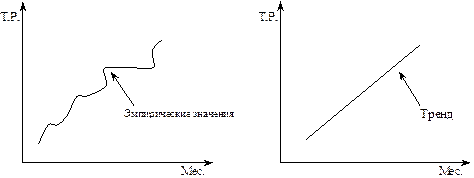Read the following text. Use dictionary if necessary. Leo Kanner introduced the label early infantile autism in 1943
Leo Kanner introduced the label early infantile autism in 1943. Autism is a disorder of neural development characterized by impaired social interaction and communication, and by restricted and repetitive behavior. These signs all begin before a child is three years old. Autism affects information processing in the brain by altering how nerve cells and their synapses connect and organize; how this occurs is not well understood. It is one of three recognized disorders in the autistic spectrum (ASDs), the other two being Asperger's syndrome - a form of autism in which the person affected has limited but obsessive interests, and has difficulty relating to other people; and Pervasive Developmental Disorder-Not Otherwise Specified (commonly abbreviated as PDD-NOS), which is diagnosed when the full set of criteria for autism or Asperger’s syndrome are not met. A few examples of autistic symptoms and treatments were described long before autism was named. The earliest well-documented case of autism is that of Hugh Blair of Borgue. The Wild Boy of Aveyron, a feral child caught in 1798, showed several signs of autism; the medical student Jean Itard treated him with a behavioral program designed to help him form social attachments and to induce speech via imitation. The New Latin word autismus (English translation autism) was created by the Swiss psychiatrist Eugen Bleuler in 1910 as he was defining symptoms of schizophrenia. He derived it from the Greek word autó s (α ὐ τ ό ς, meaning self), and used it to mean morbid self-admiration, referring to autistic withdrawal of the patient to his fantasies, against which any influence from outside becomes an intolerable disturbance. The word autism first took its modern sense in 1938 when Hans Asperger of the Vienna University Hospital adopted Bleuler's terminology “autistic psychopaths” in a lecture in German about infantile psychology. Asperger was investigating an ASD now known as Asperger’s syndrome, though for various reasons it was not widely recognized as a separate diagnosis until 1981. Leo Kanner of the Johns Hopkins Hospital first used autism in its modern sense in English when he introduced the label early infantile autism in a 1943 report of 11 children with striking behavioral similarities. Almost all the characteristics described in Kanner's first paper on the subject, notably " autistic aloneness" and " insistence on sameness", are still regarded as typical of the autistic spectrum of disorders. It is not known whether Kanner derived the term independently of Asperger. Starting in the late 1960s autism was established as a separate syndrome by demonstrating that it is lifelong, distinguishing it from intellectual disability and schizophrenia and from other developmental disorders, and demonstrating the benefits of involving parents in active programs of therapy. As late as the mid-1970s there was little evidence of a genetic role in autism; now it is thought to be one of the most heritable of all psychiatric conditions. The Internet has helped autistic individuals bypass nonverbal means and emotional sharing that they find so hard to deal with, and has given them a way to form online communities and work at a distance. Sociological and cultural aspects of autism have developed: some in the community seek a cure, while others believe that autism is simply another way of being. Ш. 1. Answer the questions: 1) What is autism? 2) What does autism affect? 3) How can you describe the Asperger’s syndrome? 4) What method did Jean Itard use to treat The Wild Boy of Averon? 5) Who created the word autism? 6) What was the contribution of H. Asperger into the autism research work? 7) Who is Leo Kanner? 8) What is the role of Internet in life of people with autism?
2. Say whether the following statements are true or false: 1) Autism is a disorder of brain cortex characterized by impaired social interaction and communication, and by restricted and repetitive behavior. 2) The signs of autism all begin after a child is ten years old. 3) Autism affects information processing in the brain by altering how nerve cells and their synapses connect and organize. 4) No examples of autistic symptoms and treatments were described before 1910. 5) The Wild Boy of Aveyron, a feral child caught in 1798, showed signs of intellectual disability. 6) The medical student Jean Itard treated him with a behavioral program designed to help him form social attachments and to induce speech via imitation. 7) The word autism first took its modern sense in 1938. 8) Leo Kanner of the Johns Hopkins Hospital didn’t use autism in its modern sense in English when he introduced the label early infantile autism in a 1943 report. 9) The report of Leo Kanner was of 11 children with striking behavioral similarities. 10) None of all the characteristics described in Kanner's first paper on the subject, are regarded as typical of the autistic spectrum of disorders. 3. Continue the sentences: 1) Autism is… 2) Autism affects information processing in… 3) The New Latin word autismus… 4) Leo Kanner of the Johns Hopkins Hospital first used autism … 5) Starting in the late 1960s… 6) Sociological and cultural aspects of autism… 7) The Wild Boy of Aveyron… 8) Asperger was investigating… 9) The Internet has helped autistic individuals… 10) As late as the mid-1970s…
4. Which word in the list is odd? 1) impaired social interaction and communication, restricted and repetitive behavior, speech defects; 2) limited but obsessive interests, impaired hearing, difficulty in relating to other people; 3) it helps them bypass nonverbal means and emotional sharing that they find so hard to deal with, it gives them a way to form online communities and work at a distance, it makes them feel lonely; 4) Asperger, The Wild Boy of Aveyron, Kanner, Blair. 5. Fill in the blanks with the words from the text: 1) Autism is a disorder of … characterized by impaired … and communication, and by … and … behavior. 2) These signs all begin before a child is three years old. Autism affects information processing in the brain by altering how … and their synapses connect and organize; how this occurs is not well understood. 3) The New Latin word autismus (English translation autism) was created by the Swiss psychiatrist Eugen Bleuler in 1910 as he was defining symptoms of … 4) He derived it from the Greek word autó s (α ὐ τ ό ς, meaning self), and used it to mean morbid…, referring to … of the patient to his fantasies, against which any influence from outside becomes an … 5) Leo Kanner of the Johns Hopkins Hospital first used autism in its modern sense in English when he introduced the label … in a 1943 report of 11 children with striking behavioral similarities. 6) Almost all the characteristics described in Kanner's first paper on the subject, …and…, are still regarded as typical of the autistic spectrum of disorders. It is not known whether Kanner derived the term independently of Asperger. 6. Give synonyms from the text: -a sign of an illness; -a savage child; -the role of heredity; -to seek remedy; -an external influence. 7. Make up the plan of the text. Here are the titles in the wrong order. Make the order correct: - The first usage of the word autism in its modern sense; - The role of Internet in life of people with autism; - Establishing autism as a separate syndrome; - The definition of autism; -The earliest documented mentioning of the case of autism.
|





